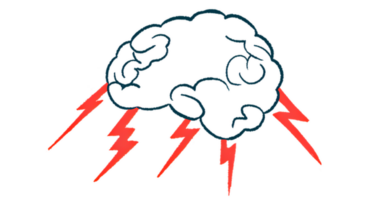Nowadays, I Always Wear 2 Masks
I received an email yesterday from my mother-in-law. It had been forwarded to her from a friend of hers. It was missing the attachment, so I don’t know what the email said apart from the five words found in the subject line. They read: “Why I wear two masks.”
It intrigued me and made me think about those of us with Parkinson’s disease who already wear two masks every day.
Hypomimia
If you have Parkinson’s, you are likely aware of, or may even have, one of the symptoms referred to as a masked or stone face. A masked face, also known as hypomimia, is a fairly common symptom of Parkinson’s disease.
In the Parkinson’s world, hypomimia means that the patient has fewer facial movements than they once had, as well as a decreased ability to control their expressions. They often appear sad, mad, angry, or depressed. Their smiles disappear. They can’t raise their eyebrows to show surprise. Animation of the facial muscles ceases to exist.
Losing control of facial muscles can be as frustrating as losing control of leg muscles to stiffness, rigidity, and slowness due to this disease. The slowness and stiffness in the face can make it difficult to smile, which can cause real frustration in the ways we communicate. It becomes even more frustrating when speech issues are added to the equation.
The COVID-19 mask
Changes in speech can cause irritation. People can’t hear us as our voice levels gradually become softer. Now add the face mask we all are wearing these days for COVID-19. It covers the Parkinson’s mask, which is the stone face we wear daily.
One of the negative ramifications of the COVID-19 mask is that it increases the already difficult task of being heard by others. However, it can also serve as a tool in leveling the playing field for those who don’t have Parkinson’s. They are able to see and to a degree understand the struggles those of us with the disease face day to day. When they don the COVID-19 mask, they are harder to hear, and often their words can sound jumbled — just like those of us with Parkinson’s.
Now we all walk around with masked faces. We not only struggle to hear the voice behind the mask, but also to see the person behind the mask. We can’t see their smile or lack thereof. We wonder if they are happy or sad, mad or glad — as we do with Parkinson’s and hypomimia.
Unmasking the blessing
Those of us with Parkinson’s disease should be encouraged. We are being given the opportunity to educate people around us who are picking up and putting on their COVID-19 face masks. Every time they do, we can seize the moment to educate and inform them about this disease, and that’s a blessing in disguise, unmasked.
***
Note: Parkinson’s News Today is strictly a news and information website about the disease. It does not provide medical advice, diagnosis or treatment. This content is not intended to be a substitute for professional medical advice, diagnosis, or treatment. Always seek the advice of your physician or another qualified health provider with any questions you may have regarding a medical condition. Never disregard professional medical advice or delay in seeking it because of something you have read on this website. The opinions expressed in this column are not those of Parkinson’s News Today or its parent company, Bionews, and are intended to spark discussion about issues pertaining to Parkinson’s disease.







Richard
I enjoyed your article on wearing two masks. As one with PD I can absolutely relate to your masking descriptions. While being masked it’s difficult to see the persons true facial expression that almost puts them on equal footing with one who carries the PD mask.
Enjoyed your article, thanks...
Sherri Woodbridge
Richard - thanks so much for your comment! Loved it!